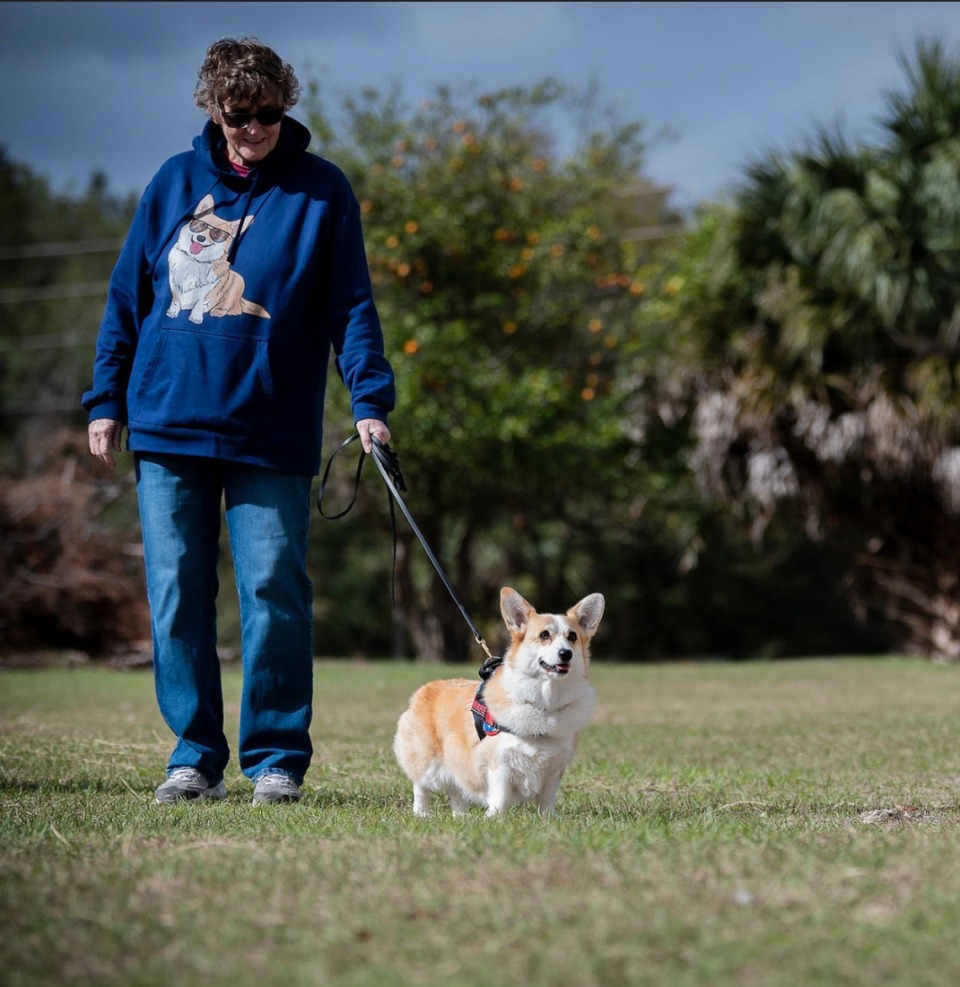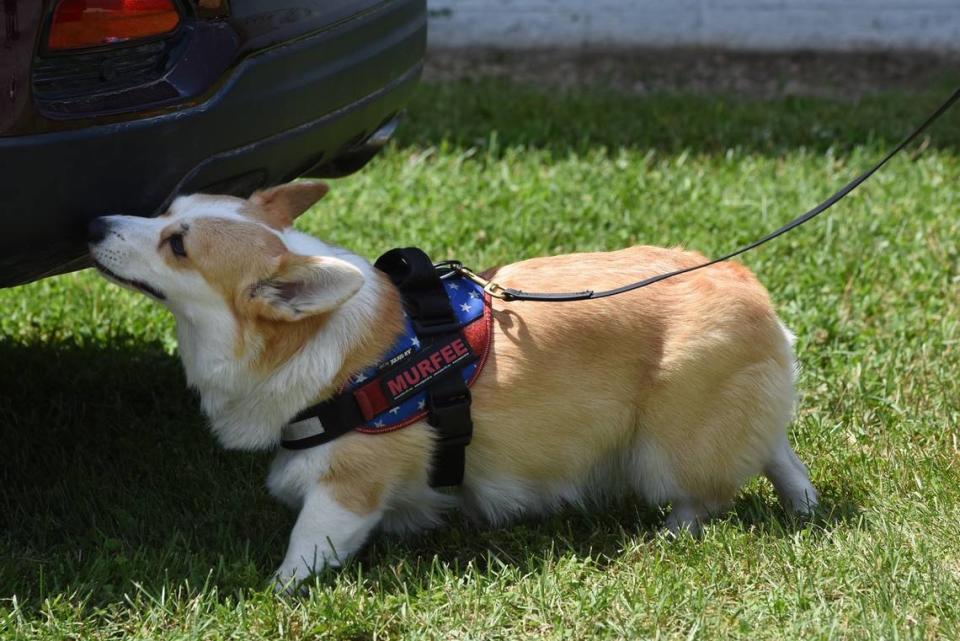MS Coast woman has sent her dog’s health records to scientists for years. Was it worth it?
A dog named Murfee tracks scents in seconds.
She sheds like a machine.
And each year, when her owner sends the beloved Pembroke Welsh Corgi’s health records to scientists, Murfee is one dog among thousands who researchers say will help humans understand mysteries of how pets – and even people – live, age and die.
Or so they hope.
The scientists behind the Dog Aging Project are racing to salvage money they fear could soon run out after a national agency recently signaled it would no longer fund the research. The dilemma made national headlines. Data from dogs across the country is at stake. And in Gulfport, as Shelley Carpenter clicked through Murfee’s online files, she worried about the fate of a project she has proudly supported for more than three years.
Where else, she wondered, would you find 47,000 people “to let you follow them from the day they’re born until the end of their life?”
“That’s never gonna happen,” she said.
But that is what Murfee and Carpenter have let the Dog Aging Project do. Since Murfee was one year old, Carpenter has sent the scientists annual reports on Murfee’s health, tested how fast she can find a treat between three boxes and even swabbed her cheek for genetic testing.
Scientists believe that information can lead to radical new research on dog and human health. Dogs are the most variable mammal on earth. There are Chihuahuas. There are Great Danes. They can get cancer, liver disease, heart disease – the same way people do.
“That makes them a really powerful model to understand aging,” said Daniel Promislow, a co-founder of the Dog Aging Project. “There’s a great opportunity from them to learn about human nature.”
Meet Murfee
Murfee is a 4-and-a-half year old Pembroke Welsh corgi with arthritis in her elbow but still loves to run and play. She is a champion at scent work -- a sport where dogs compete to find hidden cotton pads that smell like birch, anise, clove and cypress. She has dozens of ribbons.

She is also training to be a therapy dog who can sit with people at nursing homes, hospitals and read with children at the library.
In the Dog Aging Project, Murfee is dog number 3,518. Carpenter filled out a few long surveys when Murfee first enrolled in 2020. Now she submits Murfee’s medical records each year and answers a few sets of annual questions about Murfee’s health and changes.
The stakes are personal for Carpenter, who loves Corgis but lost one to the dog equivalent of A.L.S. That corgi, named Casey, spent a year in a wheelchair before she died.
Carpenter hopes sending in Murfee’s records will help dogs and humans live longer, better lives.
“If there’s a little thing I can do like the Dog Aging Project,” she said, “why not be involved?”
Scientists race for solution
In 2018, Promislow and his colleagues got a lot of money.
It was from the National Institute on Aging, a government agency that is part of the National Institutes of Health. The agency has given the researchers over $28 million since the project began, the New York Times reported.
Beginning in 2020, the scientists started to enroll dogs like Murfee. Now, they have enrolled 47,000 dogs that hail from every state.
But the agency recently decided not to renew the grant money, Promislow said, and instead have asked his colleagues to revise their application. It leaves the project in a year of limbo, and scientists are now fundraising on their own through the Dog Aging Institute. A petition to save the project also has over 13,000 signatures.
The pack of dogs has already led to discoveries. Researchers have noticed active dogs have better brain function. And dogs that eat once a day appear healthier than dogs that eat more often.
But Promislow said the study still needs years of records from dogs to solve the true mystery behind those findings.
“Now,” he said, “the question is why?”


